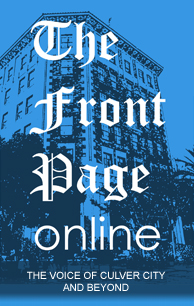Hearings on President-elect Trump’s Cabinet nominees open this week, and all should be concluded after a day or two with positive committee votes and rapid floor votes of confirmation.
Not a single nominee appears yet to be in any way endangered. While interest groups on the left are furiously fundraising off of cries of alarm and doom, the “Reid Rule” adopted by Senate Democrats in 2013 means the GOP’s majority in 2017 will give the new president the team he wants, and quickly.
It also means that President Trump’s Supreme Court nominee will also be speedily confirmed. Harry Reid set a precedent: It takes a simple majority to change the rules governing nominees and to make their confirmations a matter of simple majority rule. That precedent has yet to be applied to the nomination of a Supreme Court justice. But it surely does apply and will be applied if Democrats filibuster the nominee.
Sauce for the goose and all that. Thank you, Harry Reid.
With nominees and their teams in place, what ought they and the Congress to do first?
That agenda is the subject of my new book The Fourth Way: The Conservative Playbook for a Lasting Republican Agenda. It takes a book to lay it all out, and one that will surely scare the left as much as it ought to energize the right. But the briefest of summaries is this: Go big. Go far. Go fast. On every issue. In every agency. Through every committee of Congress and to the president’s desk.
President-elect Trump’s incoming director of communications and press secretary Sean Spicer promised me on air a very interesting first nine hours as well as a continually significant first nine months (and eight years, he added). The need for speed is so obvious as to almost make it unnecessary to repeat in print, on air or out loud.
But the fact is the Left will try to wear down the new president even as the Right did President Obama. The outgoing president got all he was ever going to get out of Congress in his first two years when he had both houses under the control of his party.
The new president will similarly be limited to legislative productivity during those years his party can hang on to its majorities. They can be gone in a blink of an eye or the defection of two senators on any vote (or permanently … remember Jim Jeffords?)
A Sub for Obamacare
So The Fourth Way lays it out in detail, as did the House Republicans in their “A Better Way” outline of last summer, championed by Speaker Paul Ryan. Democrats like to say that Republicans haven’t proposed alternatives to Obamacare, which is simply not true. The House GOP certainly has, as have numerous public intellectuals and think tanks. What hasn’t emerged yet is the finished product of those proposals and the new president’s priorities.
That is what must emerge quickly, as well as the outlines of an infrastructure package, an immigration overhaul (led by the long, strong, double-layered border fence), the path to a 350-ship Navy and more is the pressing need.
Speed, speed, speed. Democrats are hoping for scandal to divert from the agenda. Much of partisan media will be eager to save the endangered Obama agenda by pushing scandal narratives. Which is why President Trump, Vice President Pence, Speaker Ryan and Leader McConnell must meet and agree quickly on the assembly line of bills and their connection to the budget resolution and thus the simple majority rules of reconciliation.
Donald Trump won the election, so his priorities must govern the first package of bills. But the House and Senate are national bodies, so their priorities must be represented as well. A great deal of reciprocal deference will advantage everyone in the discussion, and the bigger the package of laws moving at the same time, the better the chances of the massive legislative shakeup happening.
The more moving parts, the better, and if the immigration overhaul includes not just the fence but also regularization of categories of immigrants not in the country legally, Democrats can be brought on board.
Avoiding the imperial attitude of President Obama in 2009 — “I won” was his dismissive response to bipartisanship eight years ago — is crucial to making the reforms needed.
Phase Two will be the regulatory rollback within the agencies themselves. That will take “reverse rule making” conducted via the Administrative Procedures Act if it cannot be jammed into the Midnight Rule Relief Act, which seeks to amend the Congressional Review Act to quickly kill off the last burst of nanny state activism of the outgoing administration.
The Fourth Way collects most of the key legislative priorities, but the list of regulatory reforms is so vast as to defy even book-length summary. Returning “waters of the United States” to its original intent via rule making and de-listing “endangered” species, so declared because of bogus, unscientific assertions of future habitat loss being predicted by past habitat loss, will unleash enormous energy in the housing and commercial/industrial building sectors, massive job generators.
It’s all do-able — if the new Cabinet is intent on following the new president when it comes to bold, confident action and, above all, relentless pressure for change.
There are cautions in my book. I warn Congress to avoid theoretical “reforms” to the tax code like killing or capping the home mortgage interest deduction, and warn the president-elect to avoid even the appearance of impropriety that will set off demands for impeachment before the ink is dry on his first signature on the first act he signs into law. There’s so much to do — and undo — that focus and execution on the priorities ought to absorb the energies of all of Team Trump and the Senate and House GOP caucuses.
This essay originally was posted on WashingtonExaminer.com

